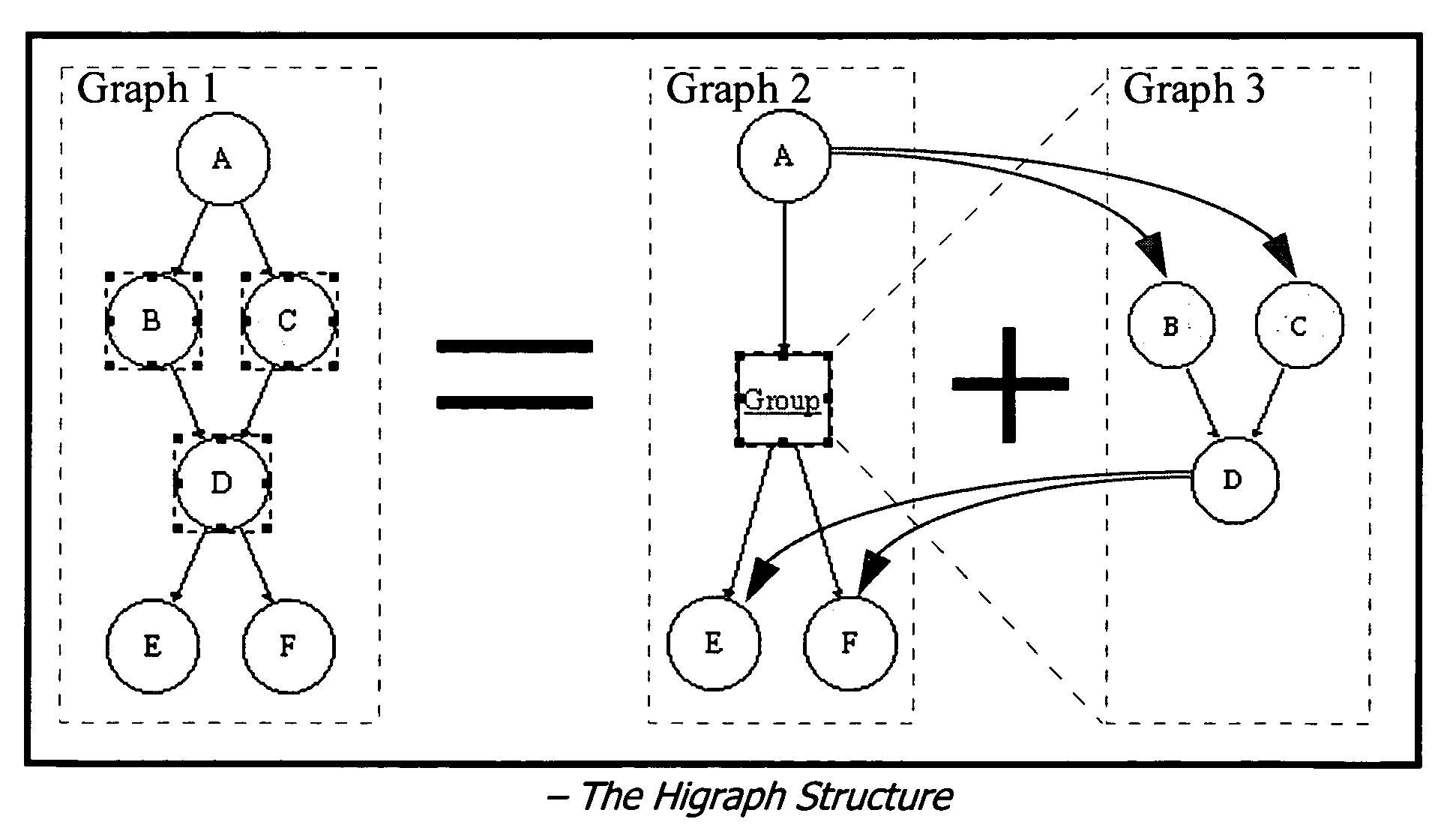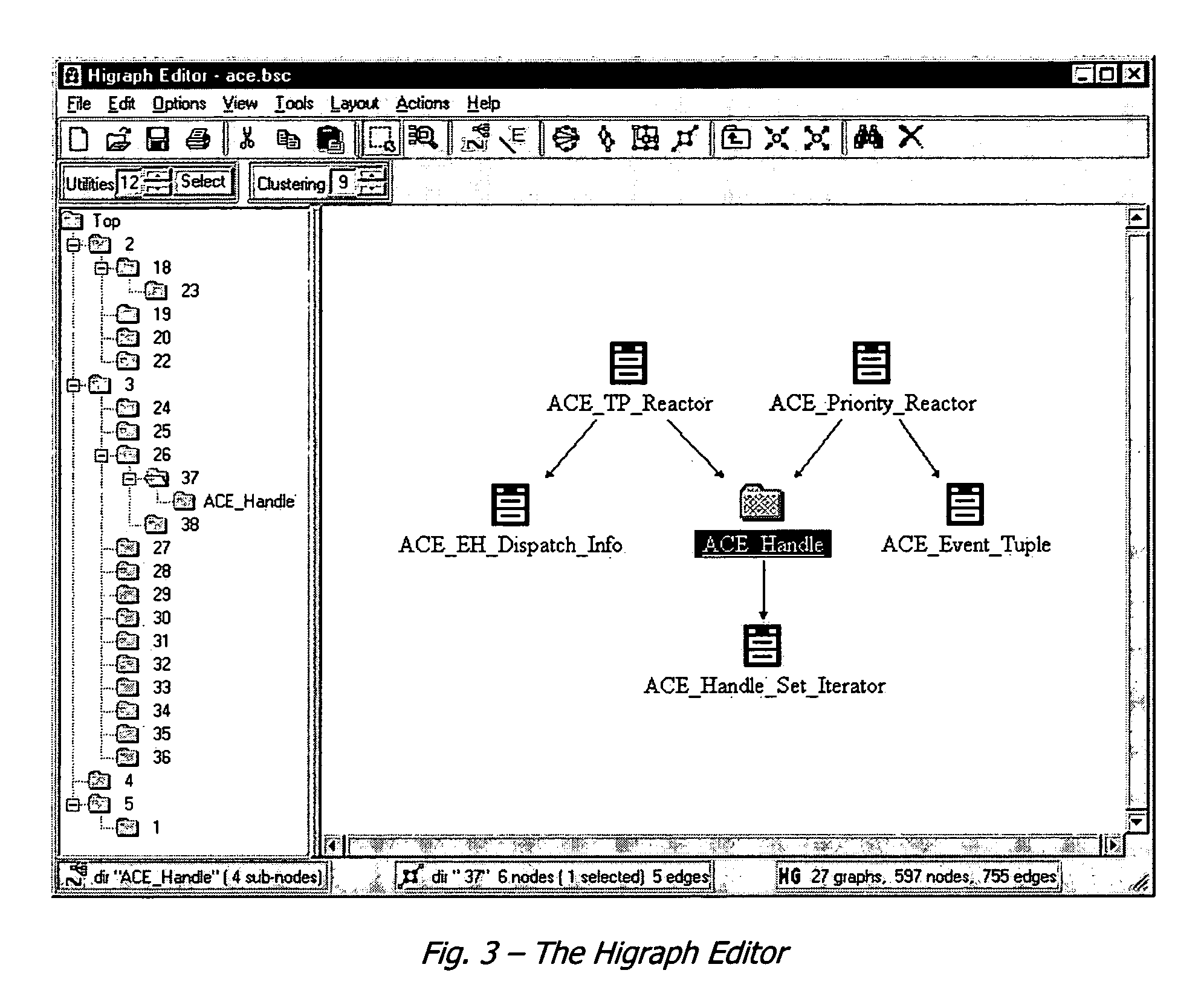System and method for computer-aided graph-based dependency analysis
a graph-based dependency and graph-based technology, applied in software maintainance/management, program control, instruments, etc., can solve the problems of man weeks and months of effort and understanding the innards of the application, code itself is either poorly structured and/or documented, and it is difficult for someone to apprecia
- Summary
- Abstract
- Description
- Claims
- Application Information
AI Technical Summary
Benefits of technology
Problems solved by technology
Method used
Image
Examples
example preferred
HIGRAPH MODEL JAVA EMBODIMENT
[0092]In this preferred embodiment, the HiGraph class comprises data and methods for representing and manipulating a higraph. An instance of the HiGraph class provides an entry point to the hinode tree in the form of a root hinode and provides a number of utility methods for finding specific hinodes so that calling code can be shielded from recursive searching through the tree. This is facilitated by redundant storage of all hinodes in a flat collection. In addition to the hinode management functionality, the HiGraph class is also responsible for managing a collection of HiConnection objects defining the (direct) dependencies between individual nodes. The methods of the HiGraph class are described in Appendix 1.
[0093]The HiNode class is preferably an abstract class (i.e. it must be subclassed to be used) that comprises data and methods for representing and manipulating a hinode, and for navigating from hinode to hinode within a higraph. Instances of the ...
example preferred rendering implementation
[0127]The system may be implemented using any of several commercially available graphing libraries that support the rendering of directed graphs. One preferred product is the Graphical Editor Toolkit (GET) from Tom Sawyer Software. GET includes facilities for causing a directed graph to be displayed in a number of different layouts, specifically hierarchical, circular, orthogonal and symmetric.
[0128]The present system renders hinodes using GET by traversing the HiNode objects within the HiGraph object representing the higraph to be rendered, and using the information derived thereby to instantiate tsNode objects in the GET library. GET uses tsNode objects to display nodes of a graph. In general, there is a one-to-one correspondence between the rendered Hinodes of a Higraph and the tsNode objects in the Tom Sawyer library. Likewise, there is a correspondence between rendered Hiedges and tsEdge objects. tsLables are associated with the tsEdges to indicate the “depth”. The specific nod...
PUM
 Login to View More
Login to View More Abstract
Description
Claims
Application Information
 Login to View More
Login to View More - R&D
- Intellectual Property
- Life Sciences
- Materials
- Tech Scout
- Unparalleled Data Quality
- Higher Quality Content
- 60% Fewer Hallucinations
Browse by: Latest US Patents, China's latest patents, Technical Efficacy Thesaurus, Application Domain, Technology Topic, Popular Technical Reports.
© 2025 PatSnap. All rights reserved.Legal|Privacy policy|Modern Slavery Act Transparency Statement|Sitemap|About US| Contact US: help@patsnap.com



